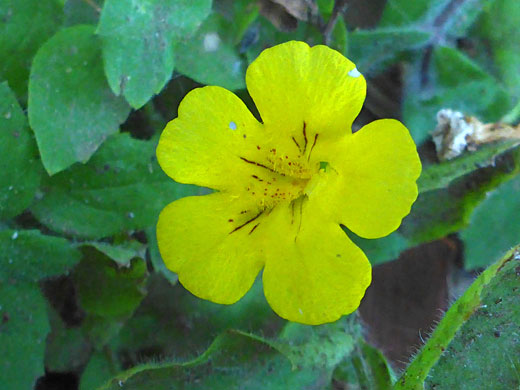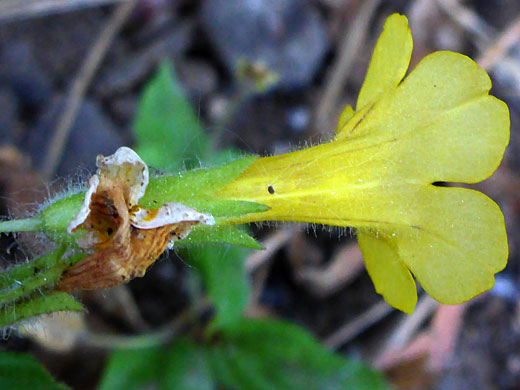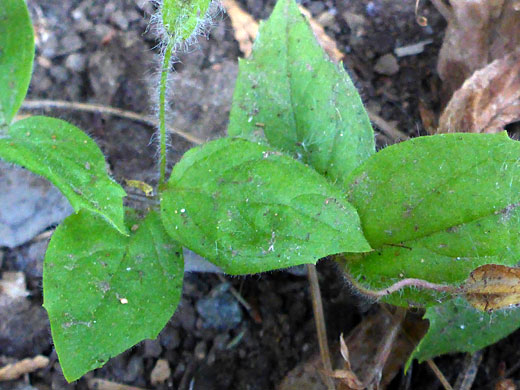Common name:
Musk monkeyflower
Family:
Scientific name:
Erythranthe moschata
Synonym:
Mimulus moschatus
Main flower color:
Range:
The Pacific states, eastwards to the northern Rocky Mountains
Height:
Up to 12 inches
Habitat:
Streambanks, seeps, other moist shady places; up to 9,000 feet
Leaves:
Stalked, ovate to oblong, sparsely glandular hairy, up to 2 inches in length
Season:
June to September
Characteristic features of erythranthe moschata include the yellow corolla, the hairy calyx, the equal-length calyx lobes and the pinnate leaf veins. Like many monkeyflower species, it inhabits wet or moist places, mostly in mountainous locations. The common name refers to the plant's musky scent.
Leaves are lined with small, well-separated teeth. Flowers are attached by long-hairy pedicels of up to 1.5 inches. The calyx is around 0.4 inches long, usually sparsely hairy, sometimes glabrous, and is divided to about one fifth of its length into five triangular lobes. The corolla tube, 1.5 to 2 times as long as the calyx, is largely cylindrical, widening slightly towards the mouth. The two lobes of the upper corolla lip and three lobes of the lower lip are similarly shaped; broad, rounded, very shallowly notched. The inside of the throat is marked with a few red dots and lines. Anthers are not exserted.
Leaves are lined with small, well-separated teeth. Flowers are attached by long-hairy pedicels of up to 1.5 inches. The calyx is around 0.4 inches long, usually sparsely hairy, sometimes glabrous, and is divided to about one fifth of its length into five triangular lobes. The corolla tube, 1.5 to 2 times as long as the calyx, is largely cylindrical, widening slightly towards the mouth. The two lobes of the upper corolla lip and three lobes of the lower lip are similarly shaped; broad, rounded, very shallowly notched. The inside of the throat is marked with a few red dots and lines. Anthers are not exserted.
All Contents © Copyright The American Southwest | Comments and Questions | Contribute | Site Map



